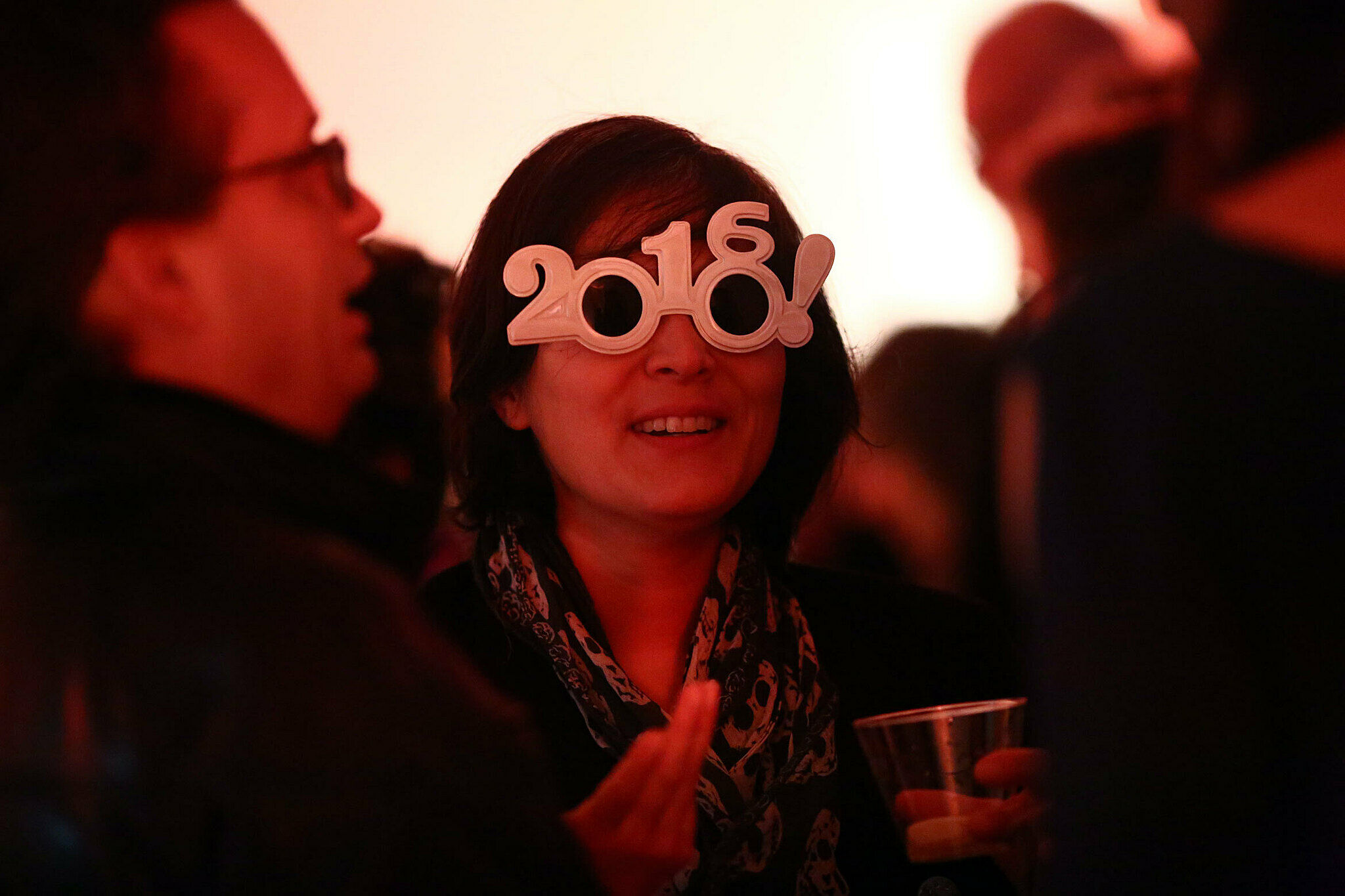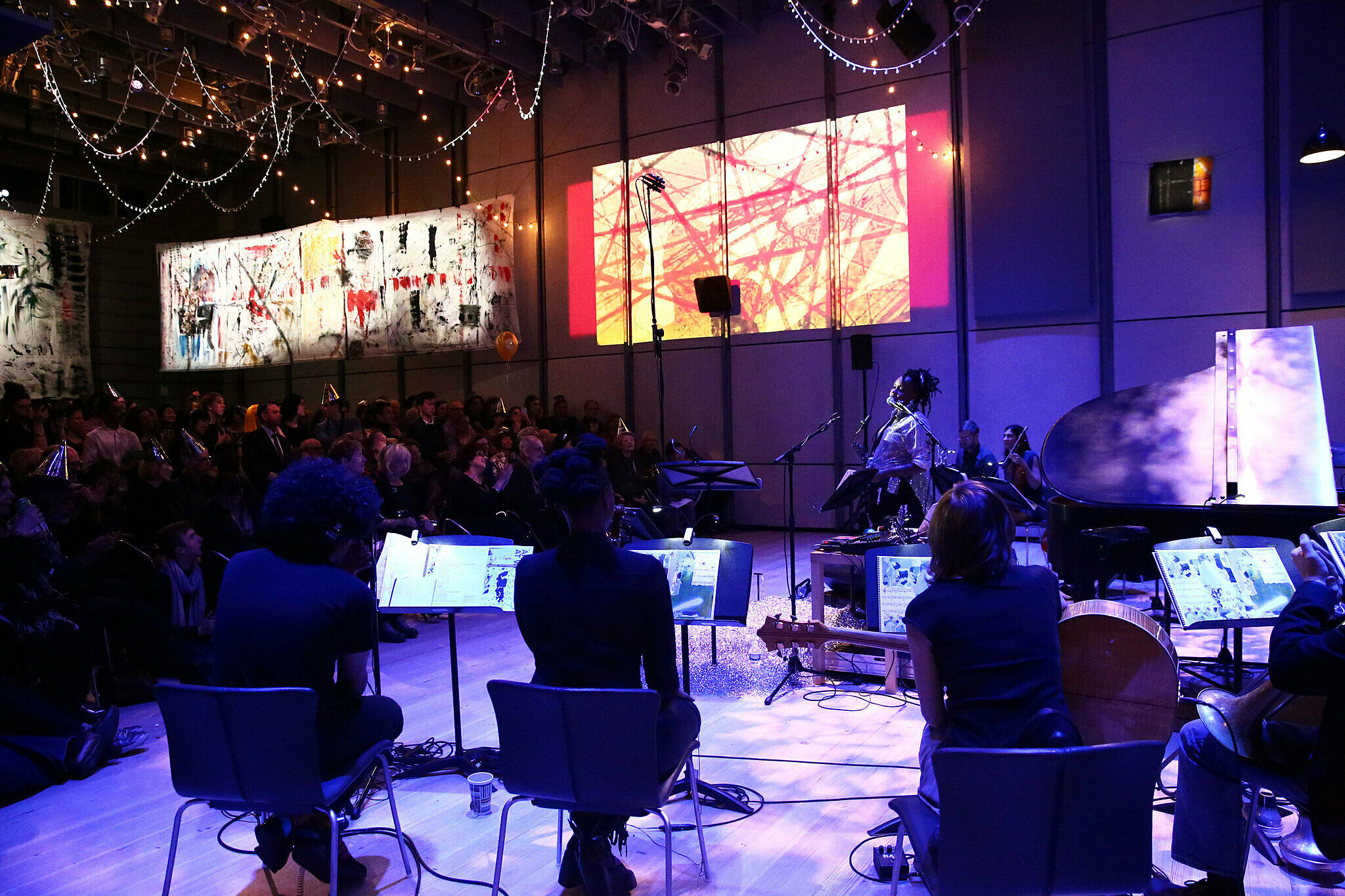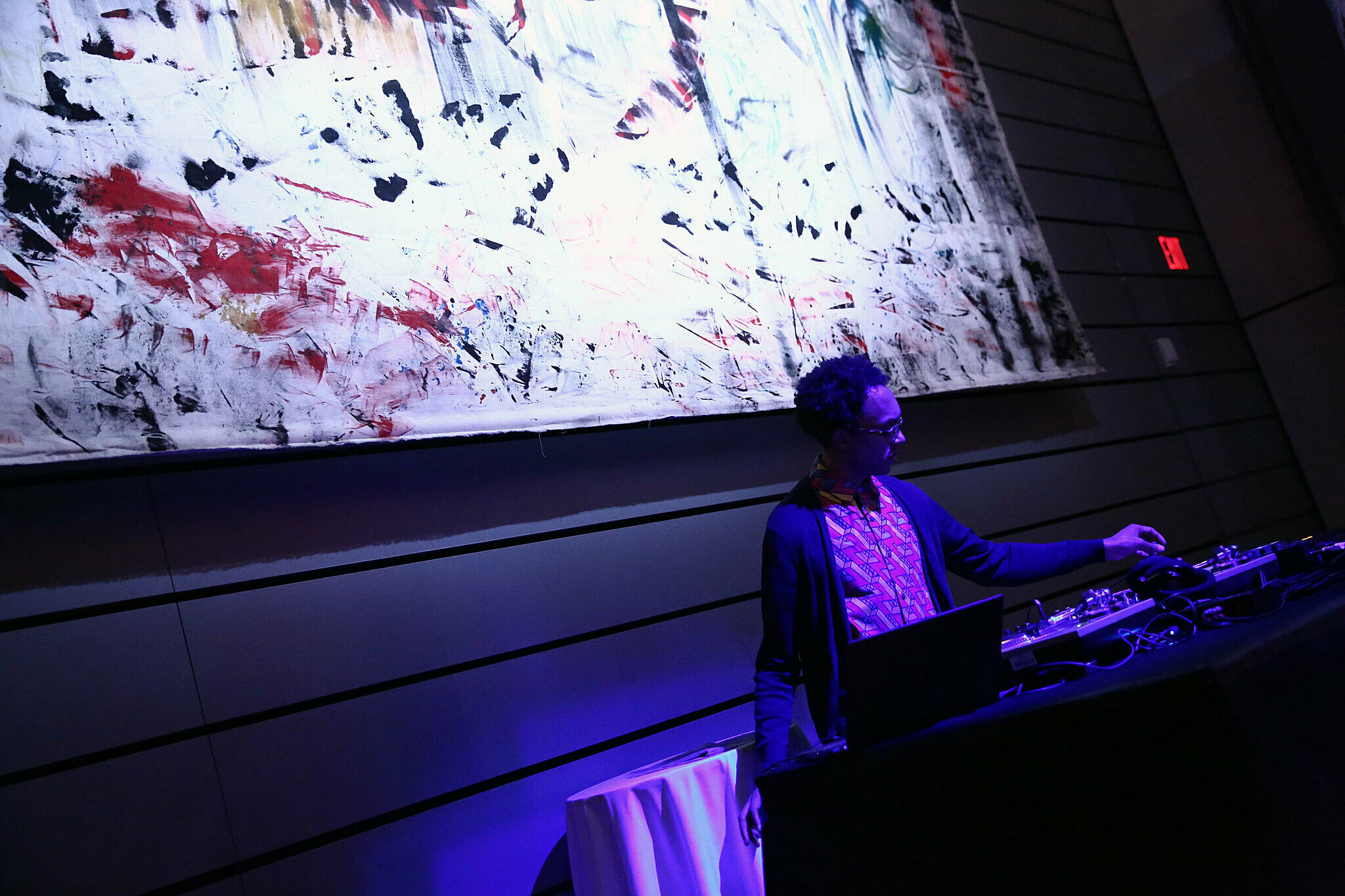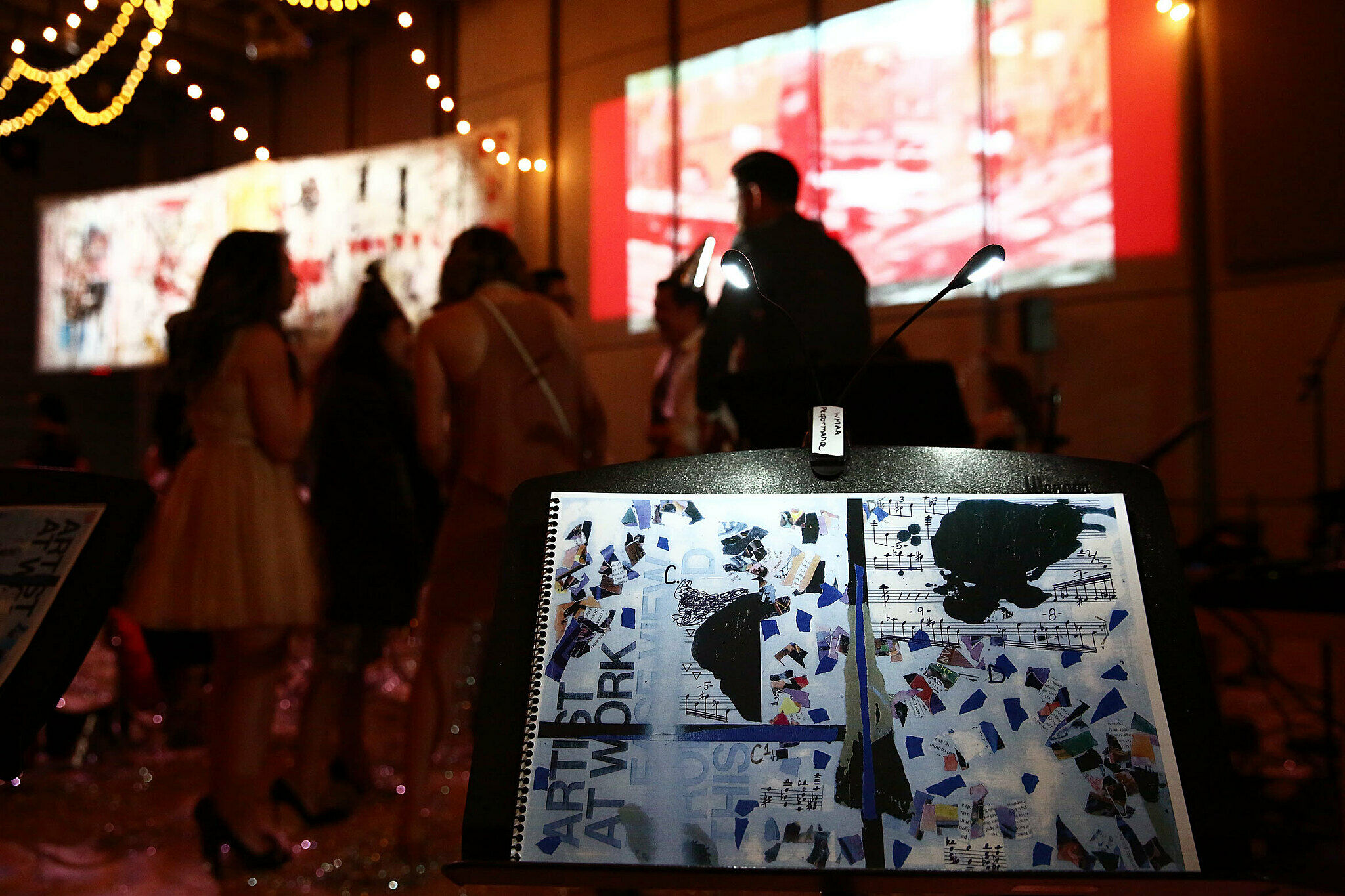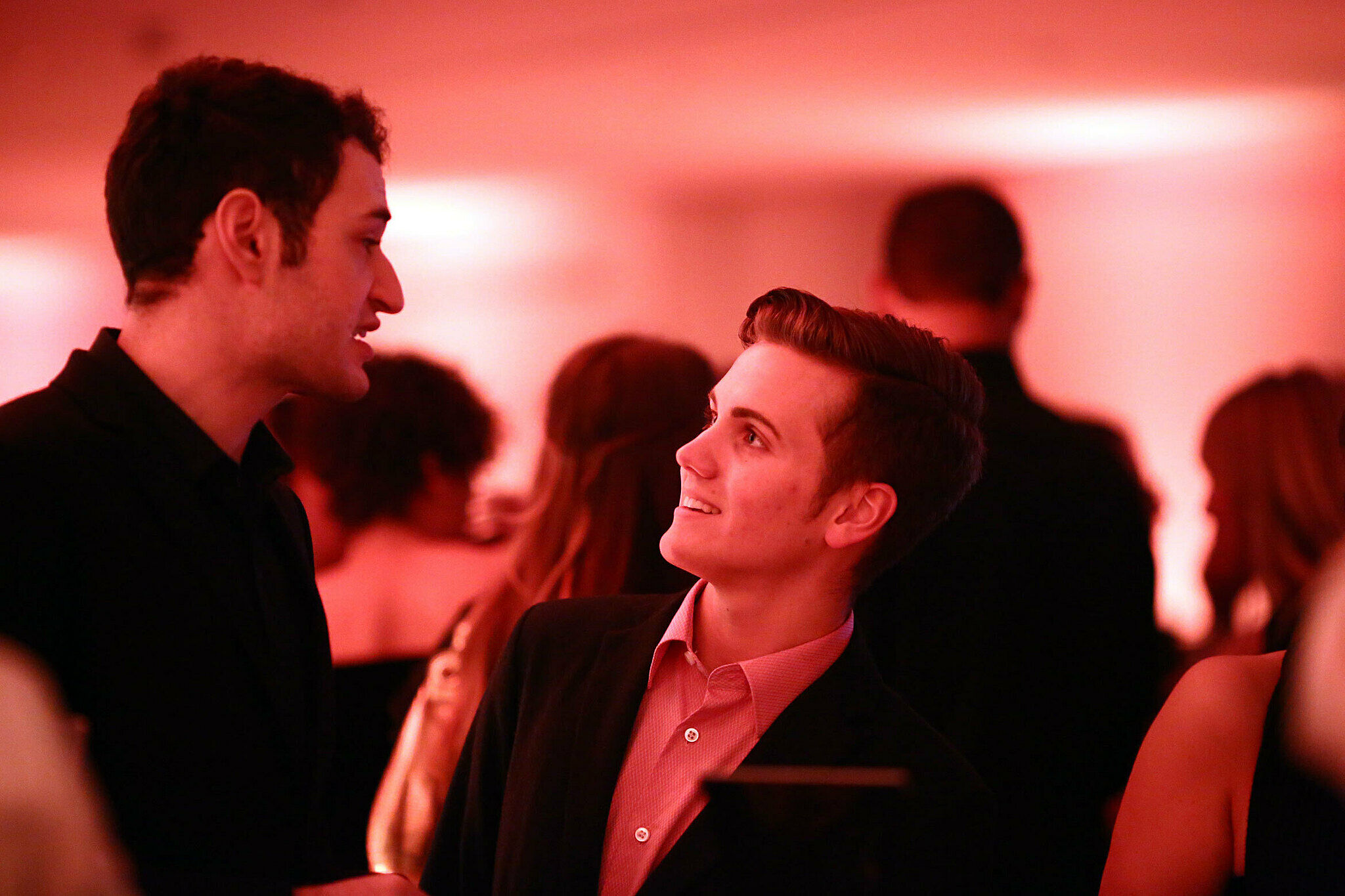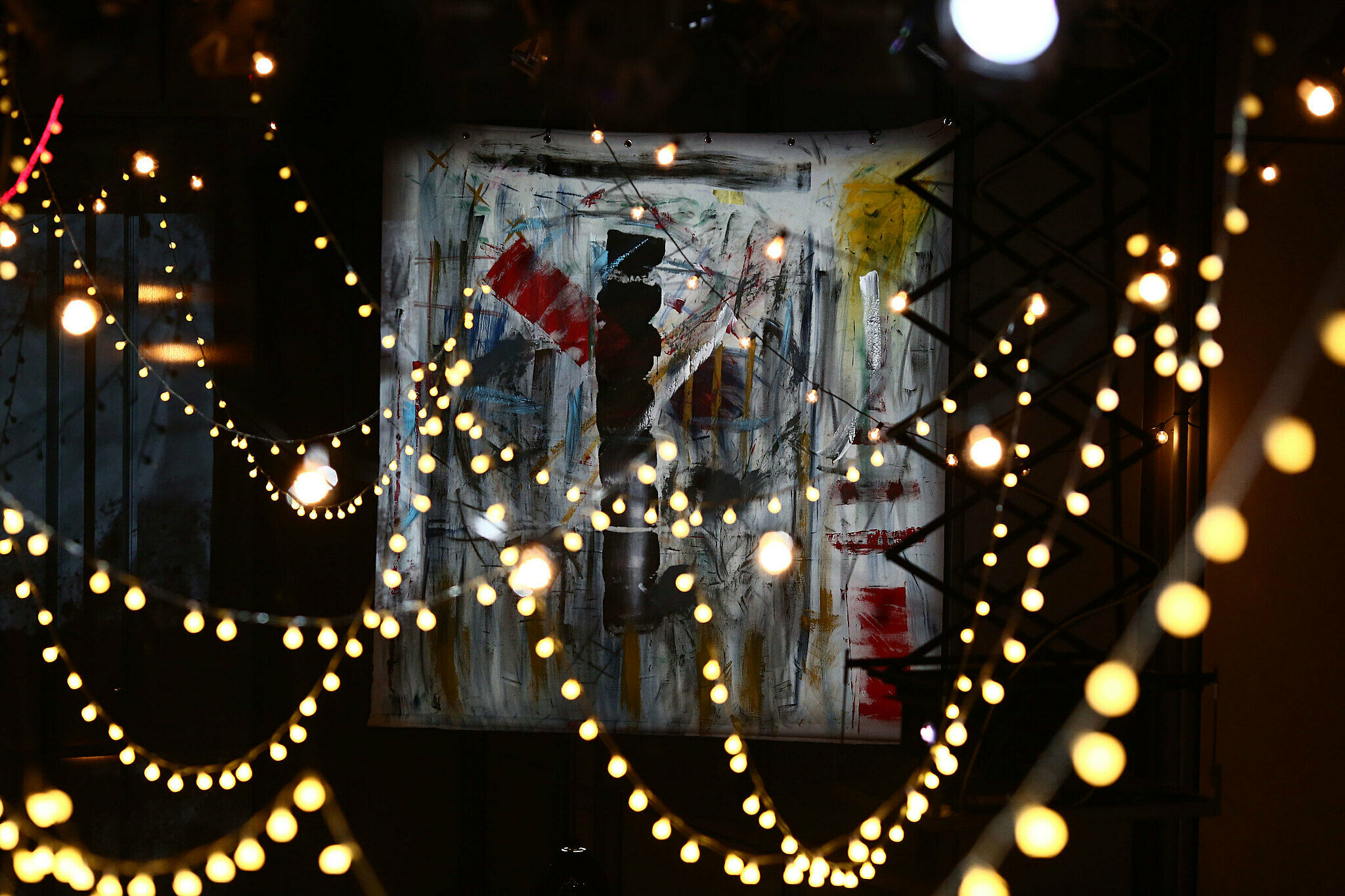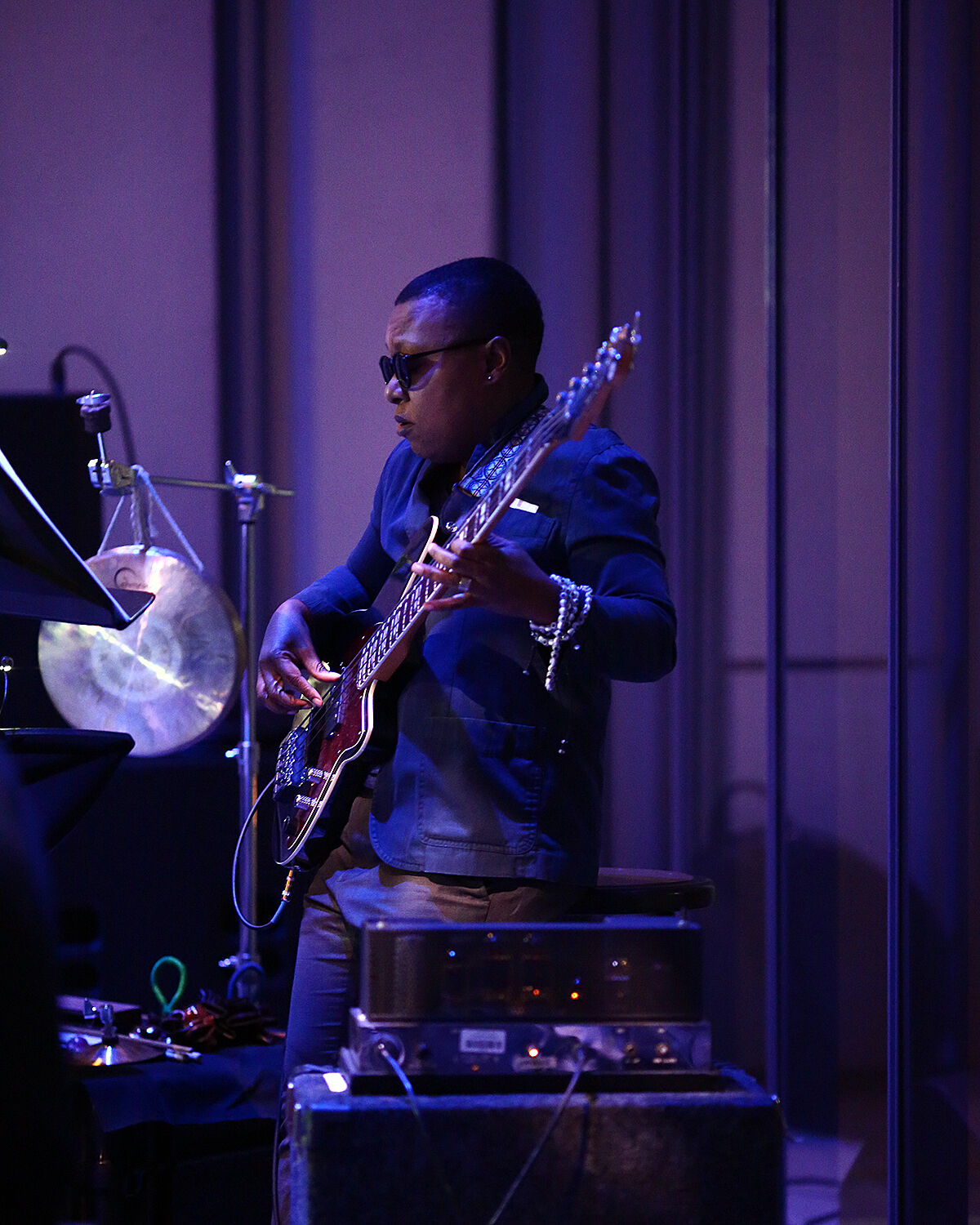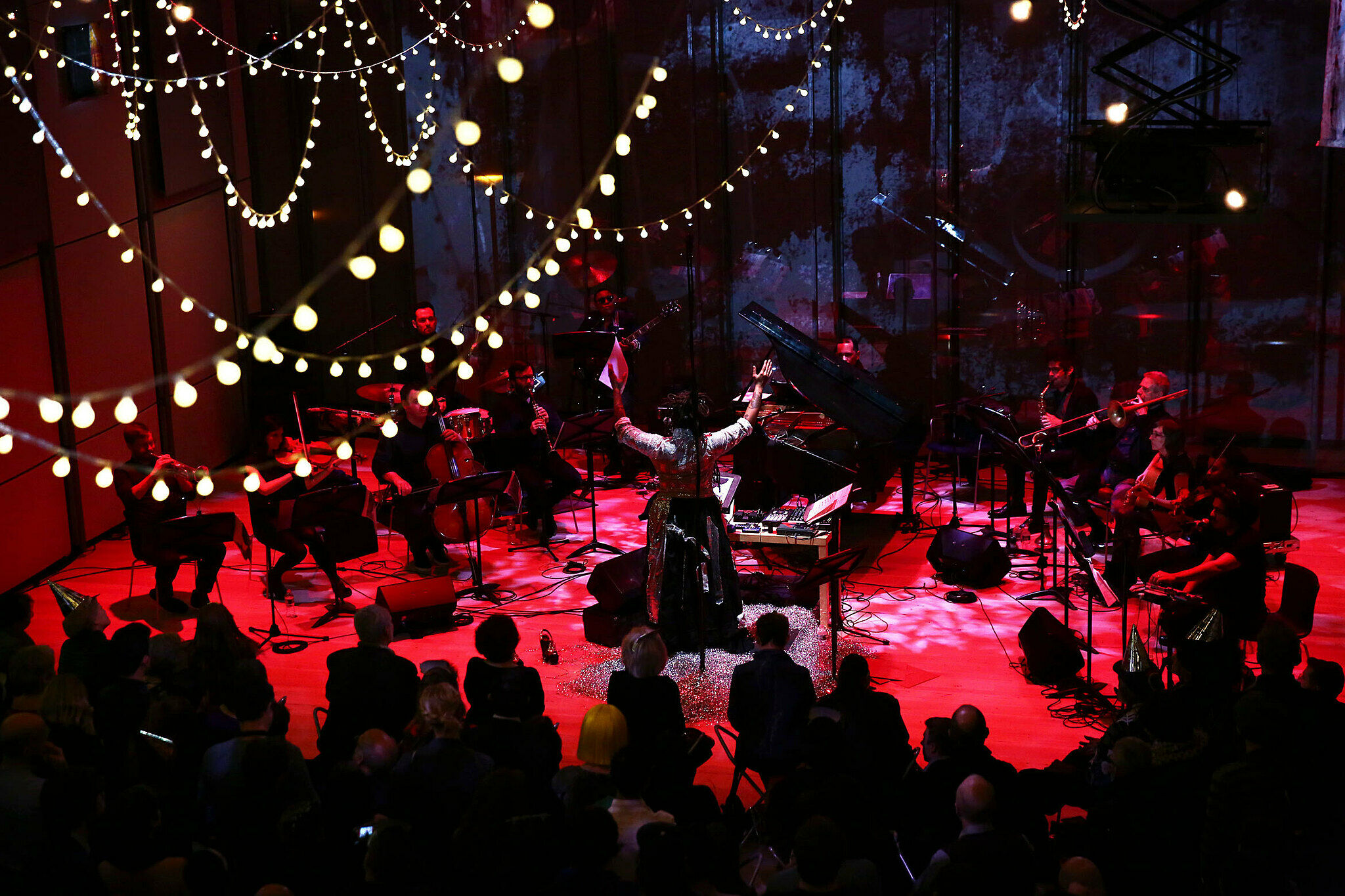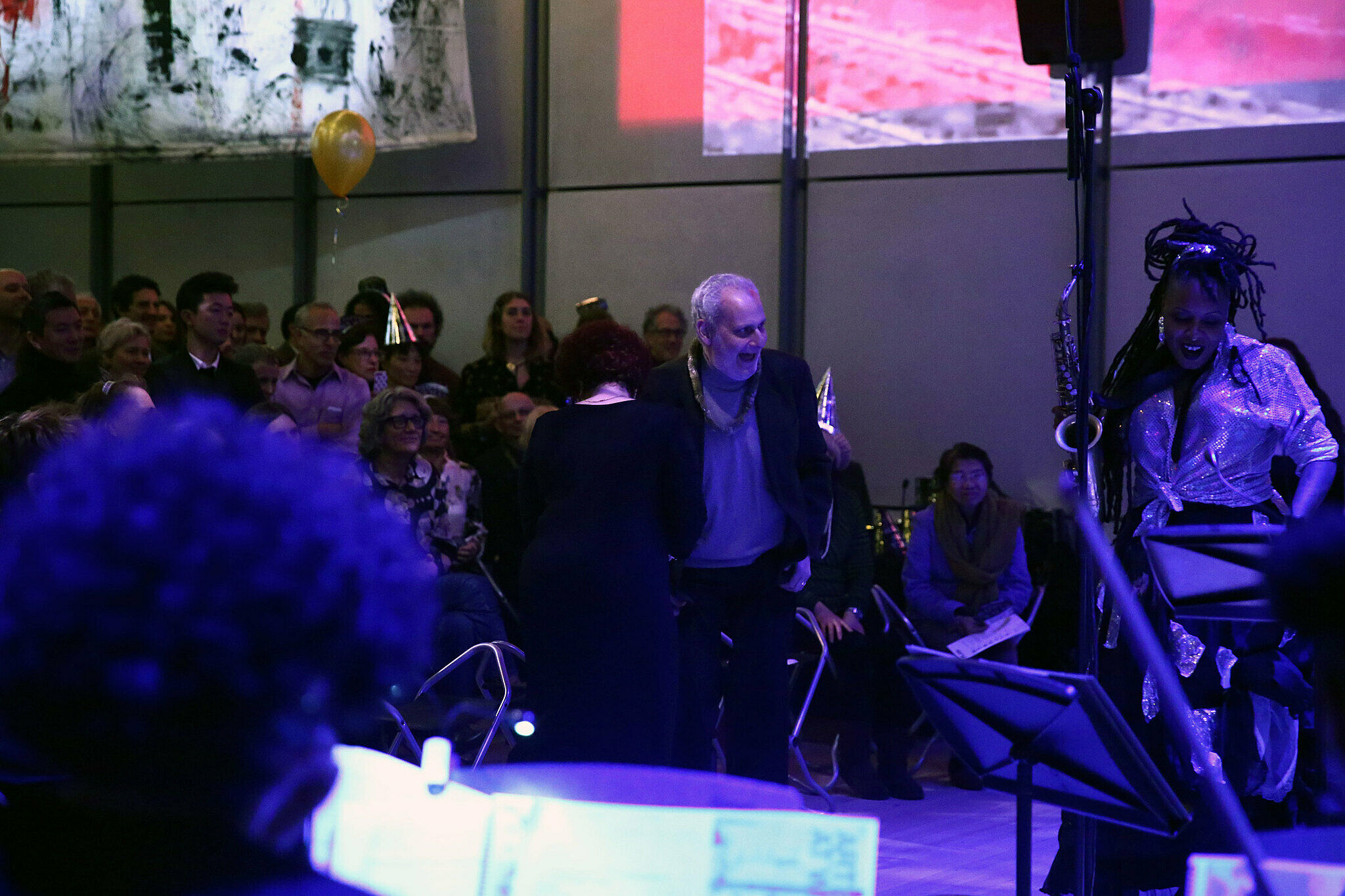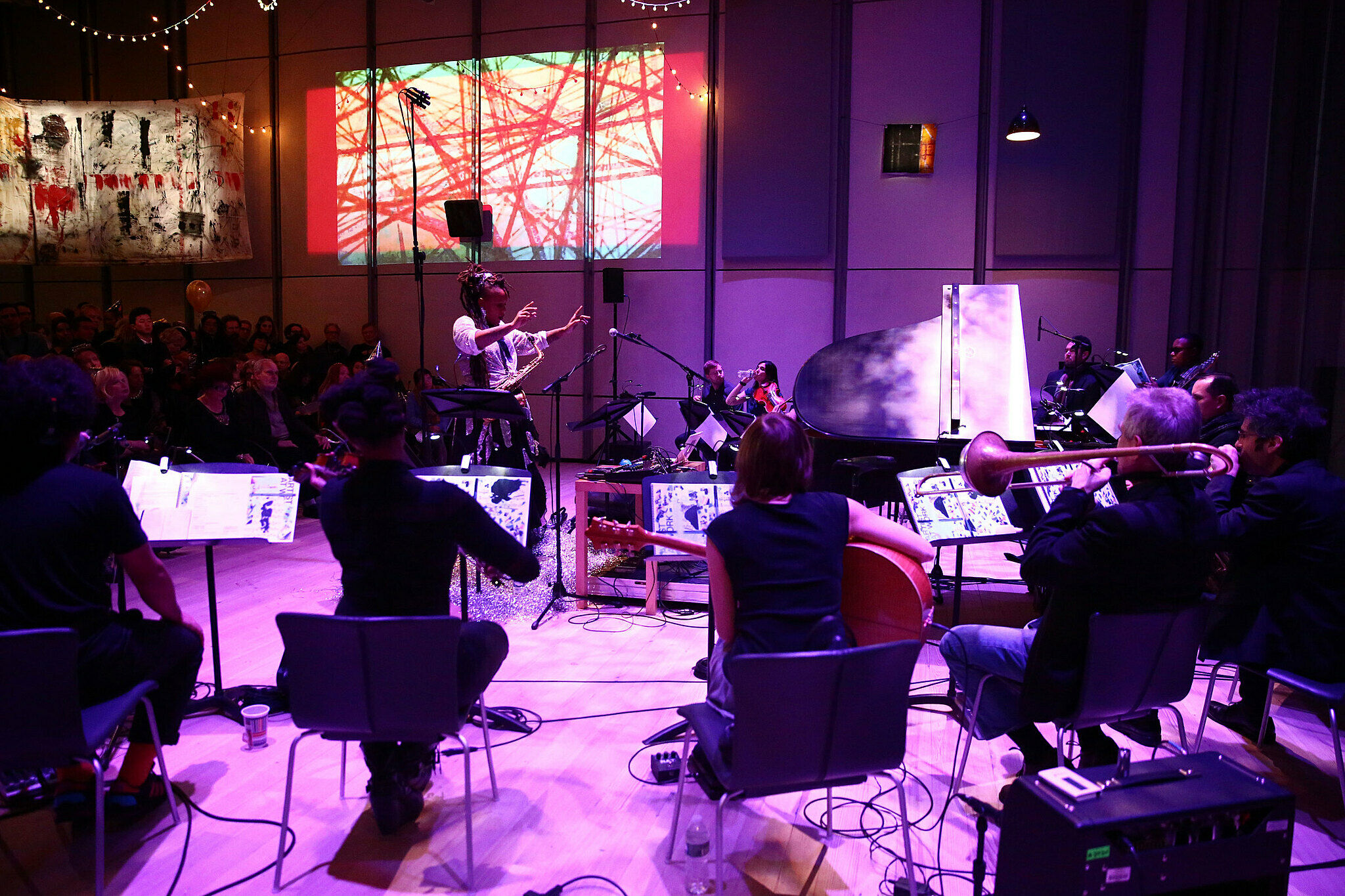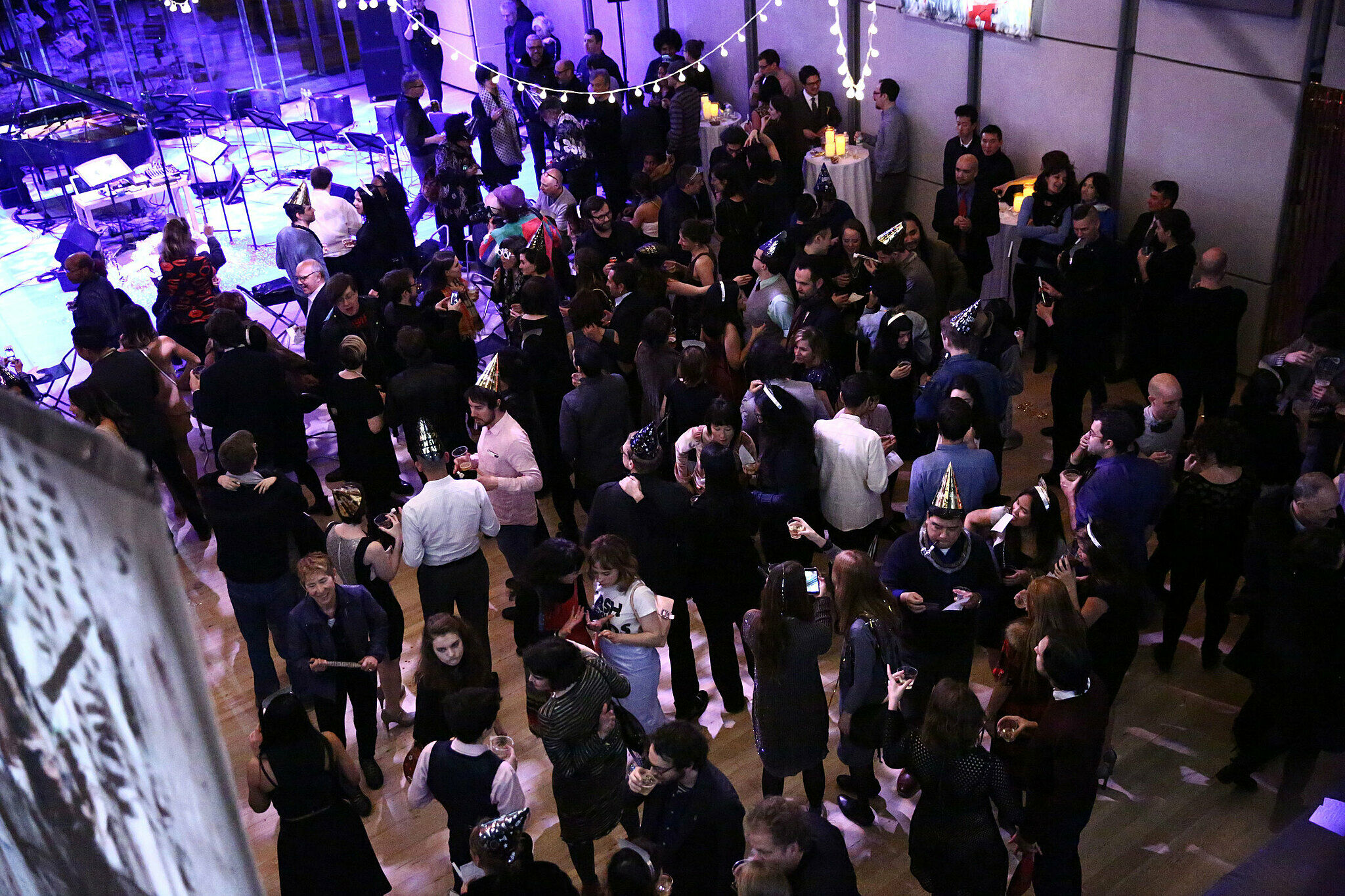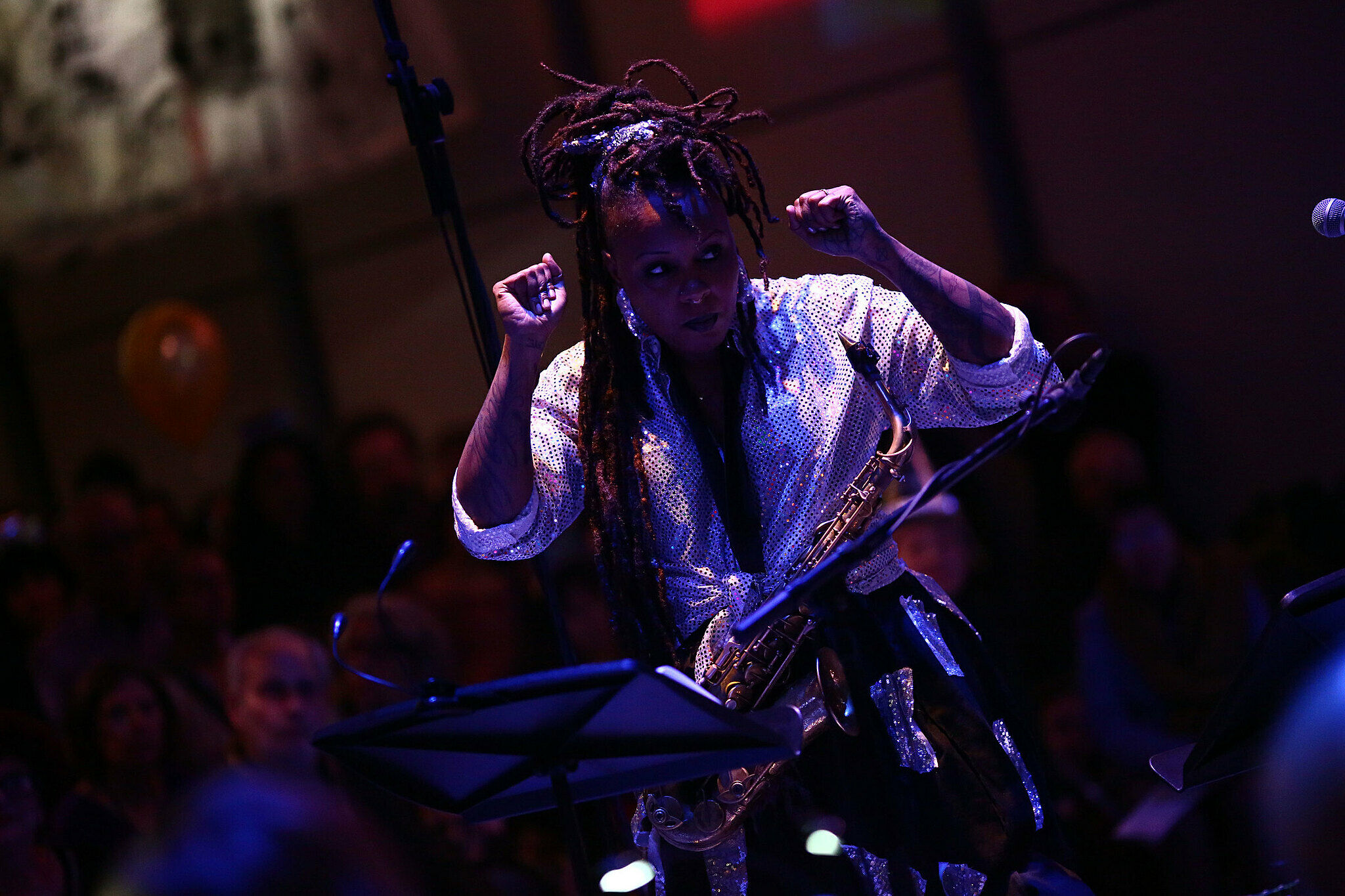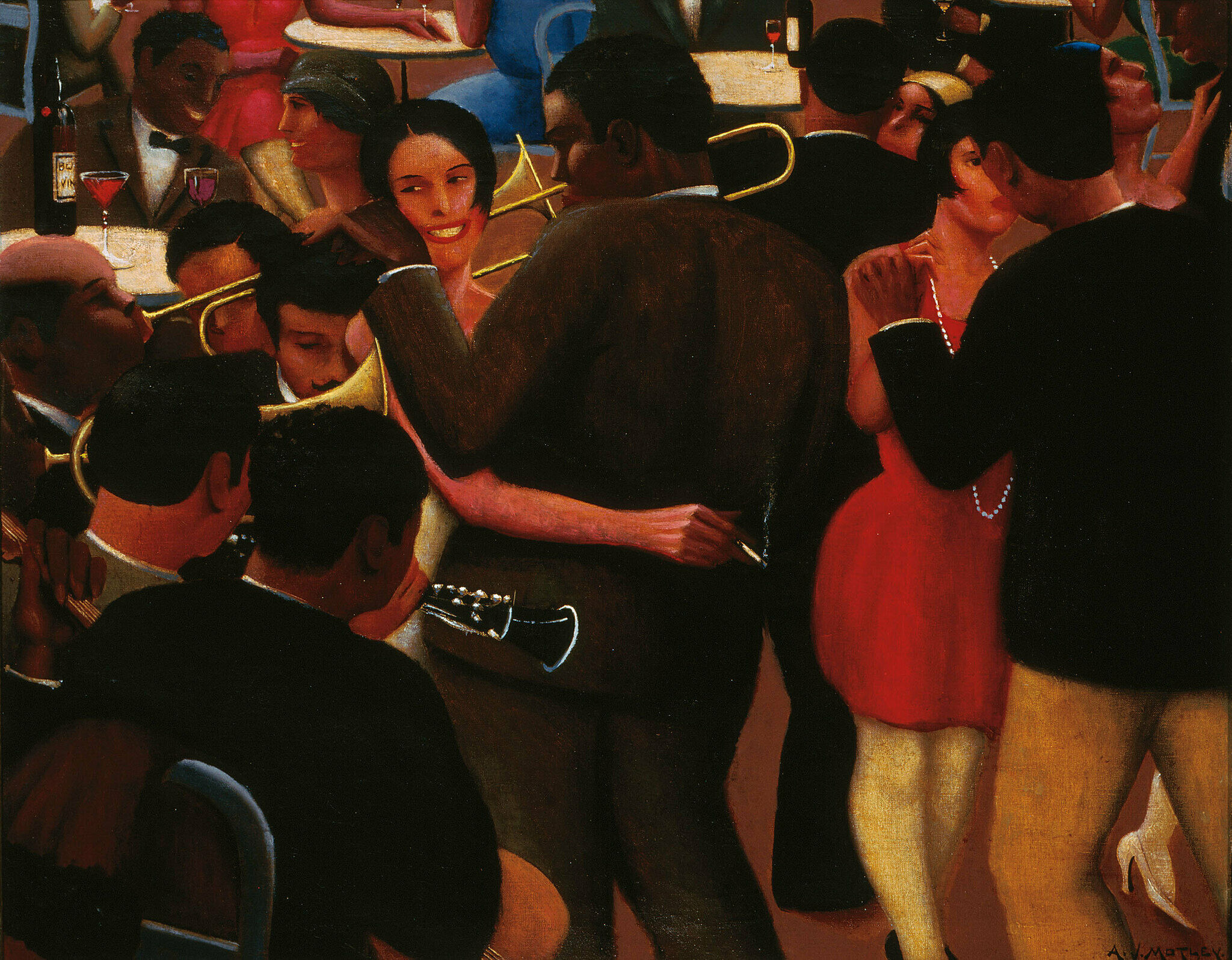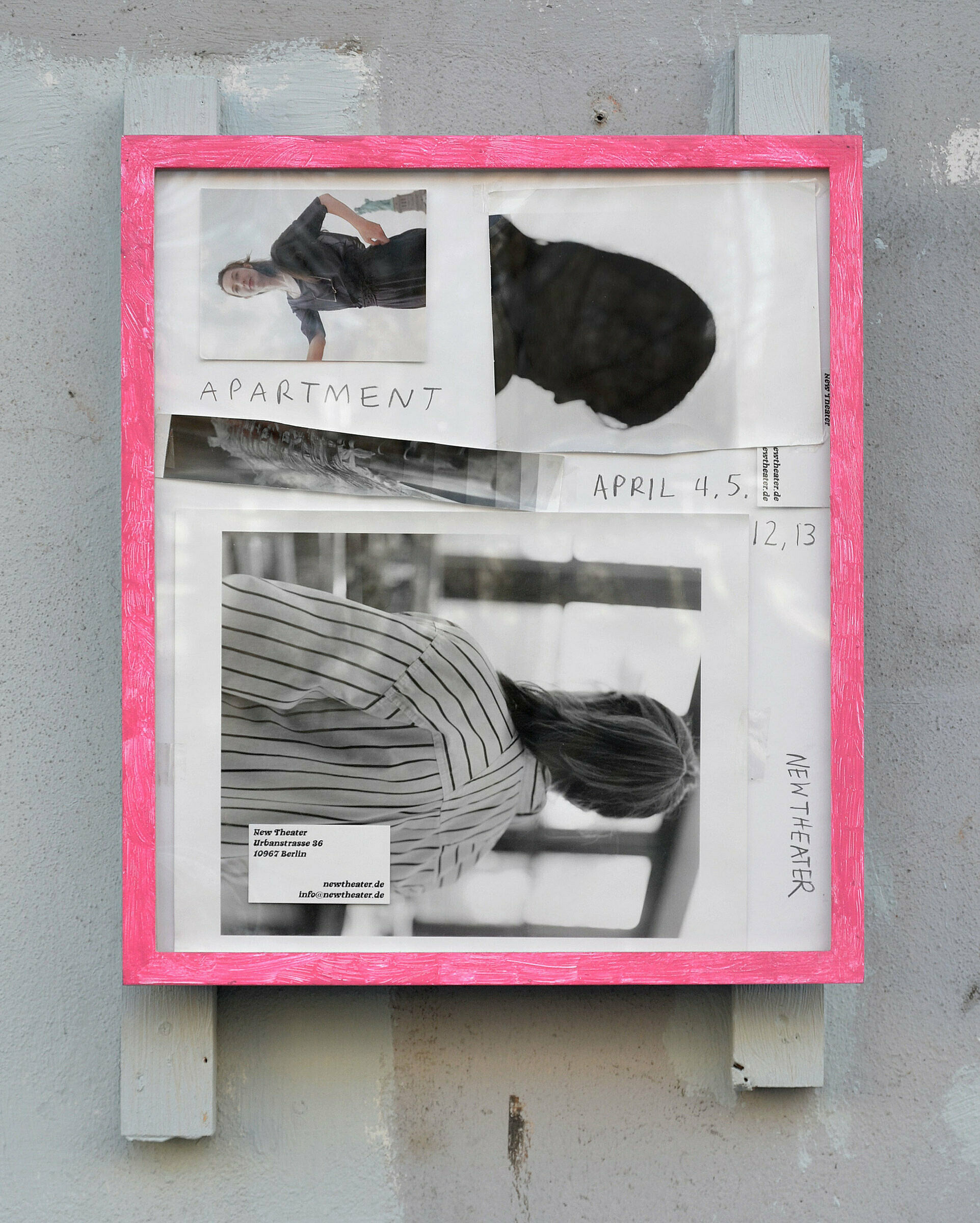What does it mean to ring in the New Year?
Jan 11, 2016
December 31, 2015 marked the end of the Whitney’s first calendar year in its new building. It was also a notable moment for sound experimentalist Matana Roberts, who over the past year has been engaged in a series of site-specific performances in the Whitney’s galleries and performance spaces. On New Year’s Eve, she concluded the series by debuting a score that she composed during those open-ended explorations. red, white and blue(s) responded to the building and the Museum's inaugural exhibition, America Is Hard to See, and also drew inspiration from Archibald Motley's work, currently on view on the eighth floor.
Throughout the night, artists, musicians, and attendees shared their reflections on what it means to ring in a new year. Read their thoughts and resolutions below.
“I think you can look at the new year as a continuation and a beginning. It’s just a demarcation in your life; time was before, and time is moving forward. You reflect on everything that happened in the past year, the good and the bad, and plan for the next year. As musicians, we’re always planning six months to a year ahead in terms of touring, recording, and gigs, so we’re used to that.
Most of us do not do typical New Year’s gigs—I haven’t done one in about twenty years—but Matana has us all spending time together, getting to play some crazy music to mark the end of the year with people we really like and enjoy playing with. It’s fantastic. I think music, or art, is always an oasis. That is what art is for: to remind us that there’s something bigger than ourselves out here.”
—Steve Swell, trombonist, composer and educator
"It’s a good milestone, an opportunity to not keep dragging things, and maybe start over. My family is from Ecuador, and in Guayaquil they make a stuffed dummy, a life-size human figure, and they fill it with old clothes and then with fireworks, and at midnight they pour kerosene on it, and they set it on fire. That represents the old year, 'Año Viejo.' Viejo means 'old man,' so you burn the old man to bring in the new year. I always liked that."
—Roberto Carlos Lange/Helado Negro, musician and vocalist
@HeladoNegro
“New Year’s Eve is a messy holiday. It’s the one night many people feel compelled to give themselves a reason to party, and the streets are filled with people. I find this social compulsion to go out and celebrate New Year’s sort of distasteful, even though as a DJ, it’s often a night when I’m working.
If you scrape away the cynicism, there’s this idealist [thinking]: it’s an amazing night when you get together and celebrate. But wouldn’t it be interesting if that night were distributed more widely? If this notion of celebration and masquerade, asking how personal transformation can begin, wasn’t only confined to December 31?
All sorts of Caribbean and African diasporic carnival traditions go on for days. You’re in it long enough to let it seep into you fully. It’s less, 'That was a crazy night last night,' and more, 'two and a half days in the carnival, and I’m here in Port-Au-Prince, and its madness.'
I actually feel like [tonight’s celebration] is an oasis. New Year’s can be such a chore, so to have really amazing musicians like Matana, and all of the people in her ensemble—that’s kind of wonderful.”
—Jace Clayton (DJ/rupture), DJ, artist, and writer
@djrupture
"What it means to ring in the new year is to have hope, and focus on what you want to accomplish beyond December 31. My resolution is to only do things that are beautiful."
—Benjamen Walker, radio producer
@benjamenwalker
"I have been in New York my whole life, and I’ve gone out for New Year’s Eve every year. Usually it has meant feeling very alone in a large room with people I don’t really know."
—Felix Bernstein, artist, poet, and writer
"We symbolically mark the end of the year, but to me it’s just a continuation. I don’t feel, in my body, that we’re changing into a new year. I just see it as one thing after another. There’s always hope that the new year is going to be better, and I think that having hope is a bad thing. It’s better not to have hope, and to take action instead."
—Rocio Salceda, artist
"I must admit I usually sleep through midnight. It’s never been a holiday that I celebrated, but the moment Matana called me, I realized this was an incredible way to ring in the new year: to be in such a prestigious space, such a beautiful, enticing space—and to be able to express myself freely. I feel like it’s the beginning of how I want to live the rest of my life, if that doesn’t sound too grandiose: to be able to improvise a little more freely in life and in music."
—Me’Shell NdegéOcello, bassist, singer-songwriter, and vocalist
@OfficialMeshell
"Set your intentions for the next twelve months, and do it with joy, and with grace, and with focus. It’s a sober time, a meditation. Figuring out what’s coming up, and what we’re going to do next.
Today we’re ending the sixth day of Kwanzaa, and the meditation for the sixth day of Kwanzaa is creativity. What a perfect way to celebrate that as well—here, doing such a creative thing."
—Mazz Swift, violinist, vox, freestyle composition artist
@MazzMuse
“It's a dual answer. This is the end of the year and the beginning of a new year, and that’s important. I think it’s been a very difficult year for many people.
The other side of it is: I’m an existentialist, and I live in the moment. Whatever happened before doesn’t matter, and I don’t know what’s going to happen next. In the next few minutes, there will be a new year, but it’ll just be another moment in time.”
—Richard Berger
"New Year’s resolutions can have a negative connotation, needing to force a change. This year, I thought about some of my favorite things that happened. I felt like that was a way to focus more on the positive.
I’m from New York—I’ve lived 33 of my 39 years here—and I’ve never once spent a New Year’s Eve in Manhattan. Normally this is a place I would avoid. But I was thinking about how much I enjoy playing the viola and, as cheesy as that sounds, I’m excited that I’m spending New Year’s playing the viola—it’s pretty much my left arm."
—Jessica Pavone, violist and composer
“It’s a way to take stock of the year that you had, look to the future, and confirm more of the good stuff—to enjoy a moment of optimism and excitement, hopefully with people you love.
It’s been really inspiring to work with Matana again. We’ve been working together for many years. It’s a great excuse to get us all together, and hang out and share stories, and take stock.”
—Tomas Fujiwara, drummer and composer
“This past year has been so damning. It’s as if we’re going backwards a little bit before we can go forwards again, or as if the idea of remembrance has been forgotten. We’ve forgotten that we’ve already been in this zone, and maybe we don’t remember because there’s not enough representation of those ideas and those moments that have already happened. I think about that a lot, and I try to process it in this work, and it was really important to do it here.
This institution is such a pantheon of American-ness in a way that I find so meaningful. To be able to work in this [theater] space, and then just go and look in the galleries, and to be reminded of certain people, is really something.
What I was trying to do tonight was create these blends, in terms of the improvisatory stuff mixed in with the more graphic, and the western notation. It’s very much what Archibald Motley’s paintings are like. The work bleeds sound. There’s so much music in the colors it’s crazy. The palettes he chooses are such that the colors blend, but they’re so bright and vibrant. He paints the way I like to make music, and I wouldn’t have had a full understanding of that, if it hadn’t have been for this exhibition. To see his paintings up close like that, and to be able to spend time was really special.“
—Matana Roberts, sound experimentalist, composer, and improviser
In the first moments of 2016, the crowd joined Roberts and Jace Clayton (DJ/rupture) for a joyous rendition of “Auld Lang Syne,” Robert Burns’s classic poetic folk song about friendship and rememberance. Watch a clip of the celebration below.

